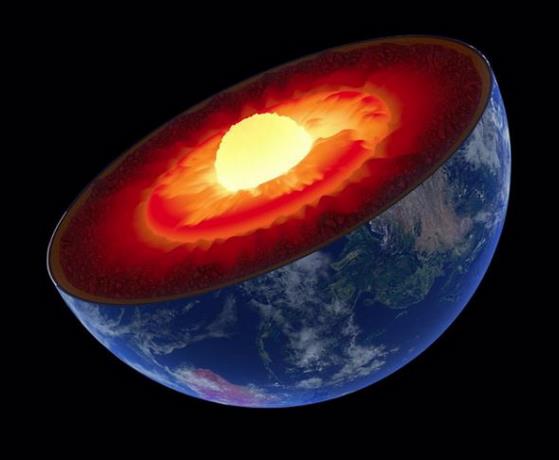Earth’s internal heat dissipates faster than previously thought, according to laboratory evidence of how a common mineral conducts heat at the boundary between the Earth’s crust and core.
The Evolution of Our Earth The Story of Its Cooling: 4.5 billion years ago, the surface of the young Earth was extremely hot, and it was covered by the deep ocean of magma. Over millions of years, the planet’s surface cooled and formed brittle crusts. However, the enormous amount of thermal energy emitted from the Earth’s interior is set in motion processes such as mantle convection, plate tectonics and volcanism.
The unanswered questions, however, are how fast the Earth has cooled and how long it will take for this continuous cooling to stop the aforementioned heat-driven processes.
One possible answer might be in the thermal conductivity of the minerals that make up the boundary between the earth’s core and surface.
This boundary layer is suitable because the viscous rock of the Earth’s crust is in direct contact with the hot molten iron and nickel of the planet’s outer core. The temperature gradient between the two layers is very steep, so more heat flows here. The boundary layer is formed mainly by the mineral bridgemanite. However, experimental verification is difficult for researchers to estimate how much heat this mineral conducts from the center of the earth to the crust.
Now, ETH Zurich professor Motohiko Murakami and his colleagues at the Carnegie Institution for Science have developed a sophisticated measurement system that allows the thermal conductivity of bridgesmanite to be measured in the laboratory, under prevailing pressure and temperature conditions. For the measurements, a newly developed optical absorption measurement method was used on a diamond unit heated by a pulsed laser.
“This measurement method has allowed us to show that the thermal conductivity of bridzmanite is about 1.5 times higher than previously thought,” Murakami said in a statement. This suggests that the heat flux from the center to the overlay is higher than previously thought. Increased heat flux, in turn, increases mantle convection and accelerates the cooling of the Earth. This means that plate tectonics, which is constantly driven by Mandel’s convective motions, can slow down faster than researchers expected based on past values of thermal conductivity.
Murakami and colleagues have shown that rapid mantle cooling will transform stable mineral phases along the core-mantle border. Upon cooling, Bridgemanite becomes a post-Perovskite mineral. But as the Post-Froskite core appears to dominate the core-mantle border, mantle cooling may accelerate further, researchers estimate, because the mineral conducts heat more efficiently than bridgemanite.
“Our results could give a new perspective on the evolution of Earth’s dynamics. Other rocky planets, such as Mercury and Mars, are cooling and dormant much faster than expected,” Murakami explains.
However, you can not say how long it will take for the convection currents in the mantle to stop. “We do not yet know enough about these types of events to indicate their timing.”
To do that first you need to have a good understanding of how mantle convection works on a spatial and temporal basis. In addition, scientists need to clarify how the decay of radioactive elements inside the Earth, one of the main sources of heat, affects the dynamics of the mantle.





:quality(85)/cloudfront-us-east-1.images.arcpublishing.com/infobae/KTKFKR763RBZ5BDQZJ36S5QUHM.jpg)